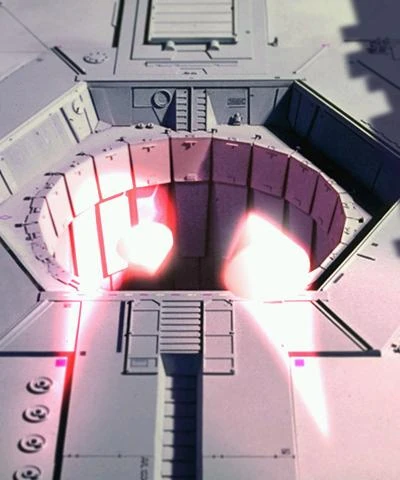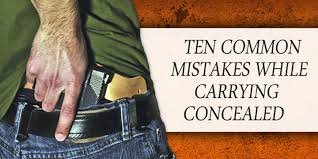-
If you enjoy the forum please consider supporting it by signing up for a NES Membership The benefits pay for the membership many times over.
You are using an out of date browser. It may not display this or other websites correctly.
You should upgrade or use an alternative browser.
You should upgrade or use an alternative browser.
Plea Deal For Woman With Gun In Clam Bag
- Thread starter Reptile
- Start date
- Joined
- Apr 8, 2007
- Messages
- 2,734
- Likes
- 3,219
KEEPING it in there?
So that's what that front sight thingy is for.
That poor pistol will never be the same.
That's "value added" to the right perv.
LOL....HOTDOG DOWN A HALLWAY!!
- Joined
- Sep 10, 2009
- Messages
- 41,857
- Likes
- 79,509
LOL....HOTDOG DOWN A HALLWAY!!
I thought this was Skywalker's shot down the pipe on the Deathstar...


Whiskeywon
NES Member
I know it doesn't have them, but it just made me think front slide serrations for added texture and grip~So that's what that front sight thingy is for.
Wickedcoolname
NES Member
I wonder if it's accurate up there or does she just spray and pray.
- Joined
- Apr 20, 2013
- Messages
- 3,632
- Likes
- 2,422
Gives new meaning to the old clamshell holsters from the 60's...
Edit: added quote from the other thread.
Gives new meaning to the term Clamshell Holster...
Fighting Leather: The Clamshell Holster - RevolverGuy.Com
The inventor of the clamshell holster was Mr. Frank C. Jewett, whose patent for the design was granted on 10 October 1933.
Jewett hoped to accomplish several objectives with his novel design. The most obvious was a fast and unobstructed presentation of the gun.
At the time of the patent, most uniformed police officers (especially those who worked the highways and rural areas) favored revolvers with long, six inch barrels, which were carried in open top pouches and secured by a safety strap. To draw these guns, officers had to release the safety strap, pull them upwards from the pouch until the long barrels cleared the top of the leather, then rotate them to orient the muzzle towards the target. This didn’t happen very fast. Operating the safety strap was a motion that took some time, and the officer could not establish his grip to draw the gun until this step was complete. When drawing the gun upwards, the long barrels slowed things down, and sometimes the tip of the barrel or the front sight would snag on the mouth of the pouch as the gun was rotated, frustrating the effort to make a clean and smooth draw.
In contrast, with Jewett’s design, the shooter established a normal grip on the gun and punched the hidden button with the fingertip almost simultaneously, at which point the gun could be rotated into the firing position without first having to draw it upwards. The design essentially saved two steps (strap release and upward drawing motion), allowing the shooter to get the gun into play much more rapidly.
Jewett’s design also made significant improvements to security. The two halves of the clamshell were shaped on the inside to fit the gun tightly, so that when the clamshell was locked closed, it would be extremely difficult-practically impossible—to pull the gun out the top of the holster. By hiding the release button from public view, and locating it in a place where access was naturally restricted
As popular as they were, the clamshell holsters had weaknesses that couldn’t be ignored.
The design required the user to put his finger into the trigger guard to release the gun, which led to some negligent discharges when officers fumbled the draw.
Reholstering a gun in a clamshell holster could be an awkward affair, that usually involved two hands.
![Shocked [shocked] [shocked]](/xen/styles/default/xenforo/smilies.vb/007.gif) The gun had to be carefully placed in the proper position, and the two halves squeezed together until they latched.
The gun had to be carefully placed in the proper position, and the two halves squeezed together until they latched.Yet, the most damning problem with the clamshell holster is that it had a disturbing tendency to open up on its own, dumping the gun onto the ground. This was most likely to occur during a foot chase, when the holster bumped against the leg and the jarring motion tripped the latch at the front of the holster. This could happen when the holster’s release mechanism was worn from use, or out of spec
![ROFL [rofl] [rofl]](/xen/styles/default/xenforo/smilies.vb/013.gif) because the holster body’s alignment had shifted over time.
because the holster body’s alignment had shifted over time.Some agencies, like the LAPD, had armorers who could inspect and adjust clamshell holsters to ensure more reliable operation, but the design weakness was never perfectly addressed, and it was one of the key reasons that clamshells were eventually prohibited for duty use (as LAPD finally did, in the mid-1980s).
Loved anyways
Despite all of these issues, the clamshells remained very popular for decades. They had their warts, but so did the other police duty holsters of the 1930s to 1980s (and beyond). Yes, clamshell coppers had to hold onto their holsters when they ran, had to get them readjusted once in a while so their sixgun didn’t go tumbling, and often longed for a third hand when it was time to reholster, but they thought the tradeoffs were worth it to have the fastest rig around for a six inch duty gun.
Besides, they had panache. A clamshell wasn’t your average, pedestrian, top draw rig. It was sexy
![Laugh [laugh] [laugh]](/xen/styles/default/xenforo/smilies.vb/012.gif) , and reeked
, and reeked ![Hmm [hmmm] [hmmm]](/xen/styles/default/xenforo/smilies.vb/009.gif) of the gunfighter mystique. If you wanted to look cool, it was your huckleberry. Drawing a revolver from a clamshell wasn’t just an action, it was an event! With a pop of a spring and a flash of motion, a bad guy immediately found himself staring down a sixgun barrel before he could even blink!
of the gunfighter mystique. If you wanted to look cool, it was your huckleberry. Drawing a revolver from a clamshell wasn’t just an action, it was an event! With a pop of a spring and a flash of motion, a bad guy immediately found himself staring down a sixgun barrel before he could even blink!And that didn’t just look cool . . . it was cool.
Last edited:
Dennis in MA
NES Member
- Joined
- Feb 12, 2007
- Messages
- 38,257
- Likes
- 33,170
I once saw a clamshell that was basically "retained" with an integral spring-clip that kept the sucker closed and but-good. I dunno how you'd get the gun IN there without a jimmy-bar and a few pair of vice grips. But it wasn't going anywhere and the draw was straight out the front provided you pulled stoutly enough.
Pretty sure that's not what she had. LOL
Pretty sure that's not what she had. LOL
Glockster30
NES Member
Share:
Similar threads
- Replies
- 7
- Views
- 135
- Replies
- 21
- Views
- 406



![This Thread Is Worthless Without Pics [pics] [pics]](/xen/styles/default/xenforo/smilies.vb/this_thread_is_worthless_without_pics.gif)